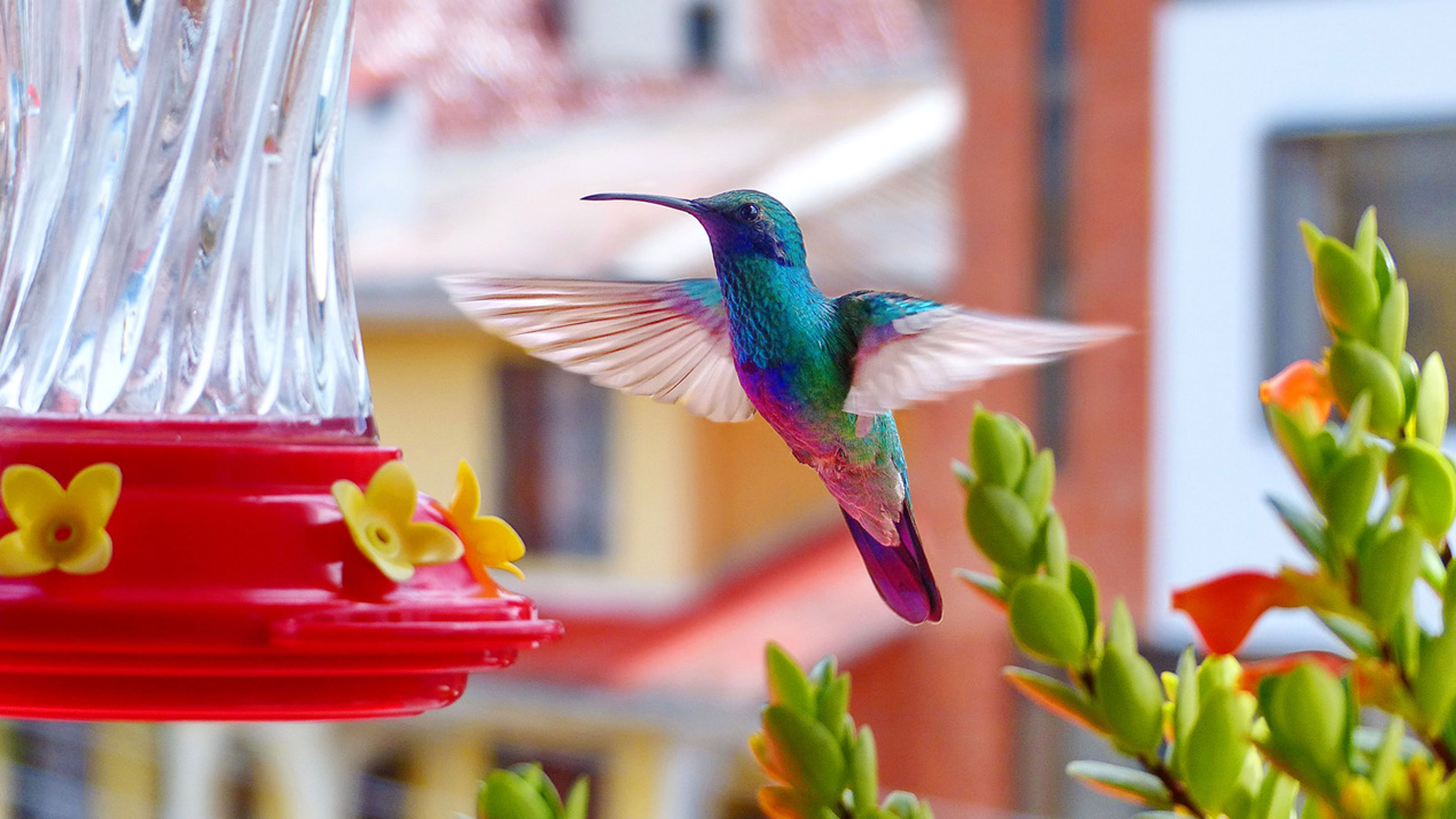
All birds are intriguing but once you know how to attract hummingbirds to your balcony, you’ll see these small yet mighty winged creatures are particularly remarkable and mesmerizing.
Weighing only a few grams and measuring just 3-5 inches, hummingbirds have a surprisingly large appetite to keep their wings beating rapidly. Our experts reveal eight ways your balcony can offer these impressive creatures a well-earned rest stop, even if your apartment is a few floors up.
Wildlife fans may already know how to attract hummingbirds to their backyard but with carefully chosen food sources and habitat influences, your balcony can enjoy the same visits, even if your apartment is a few floors up.
Eight ways to attract hummingbirds to your balcony
There are several ways to make your small balcony attractive and appealing to hummingbirds. We’ve asked wildlife and gardening professionals their tried and tested methods that temp the sweet-billed beauties up to tiny outdoor balcony spaces, even in urban areas.
All prices were correct at publication.
1. Plant colorful flowers
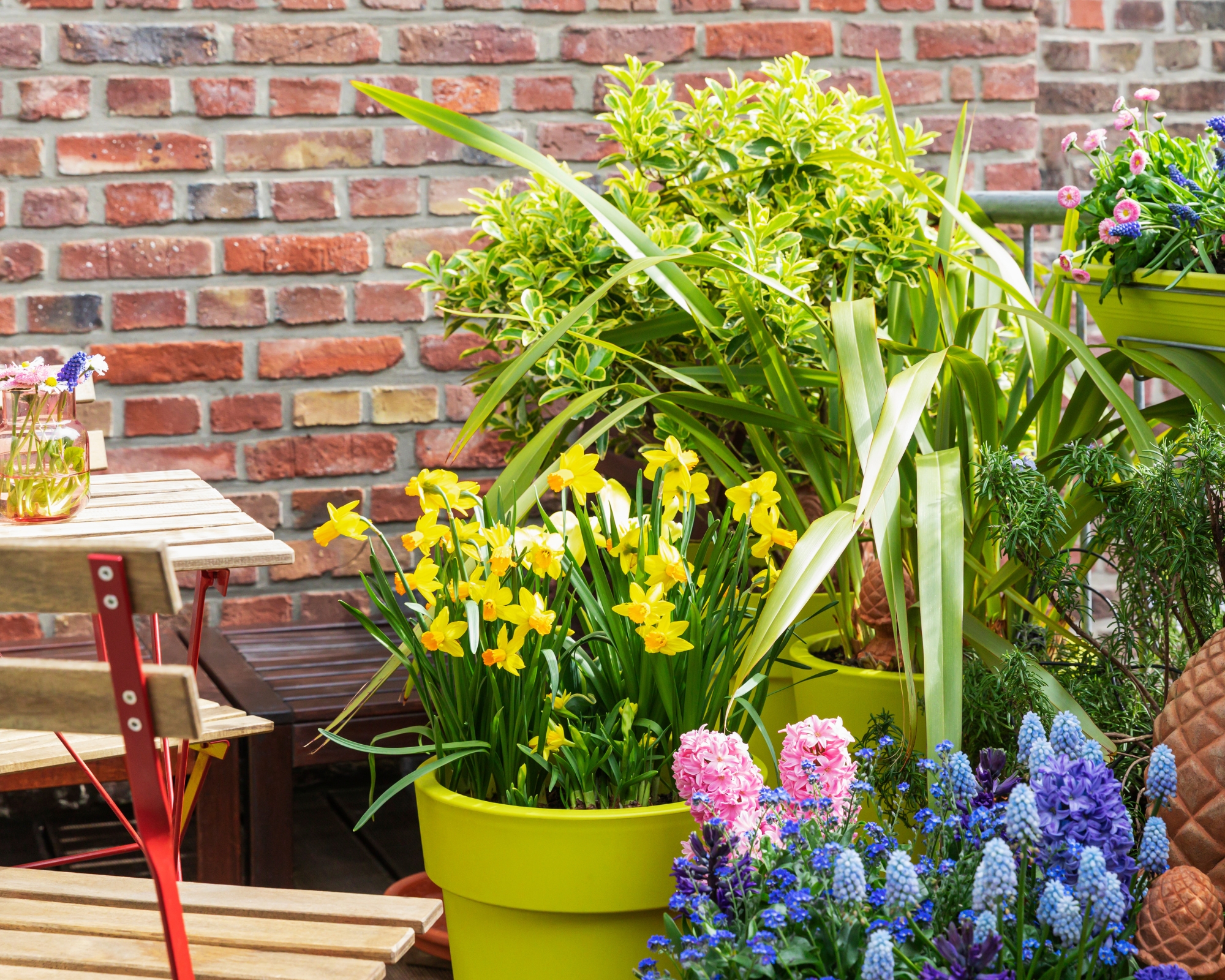
The first and most obvious way to encourage hummingbirds onto your balcony is to turn your small terrace into a beautiful urban garden filled with hummingbird-friendly flowering plants (you can easily do this on a balcony with container gardening).
Hummingbirds' favorite food is sweet nectar produced in tubular-shaped flowers. This is the reason the tiny and talented creatures are perfectly designed to beat their tiny wings so fast creating that wow-factor floating effect. Their delicate long narrow bills and tongues then reach deep inside the pipe-shaped petals to feed.
According to The National Audubon Society, hummingbirds adore colorful tubular flowers such as trumpet honeysuckle, bee balm, and hummingbird sage.
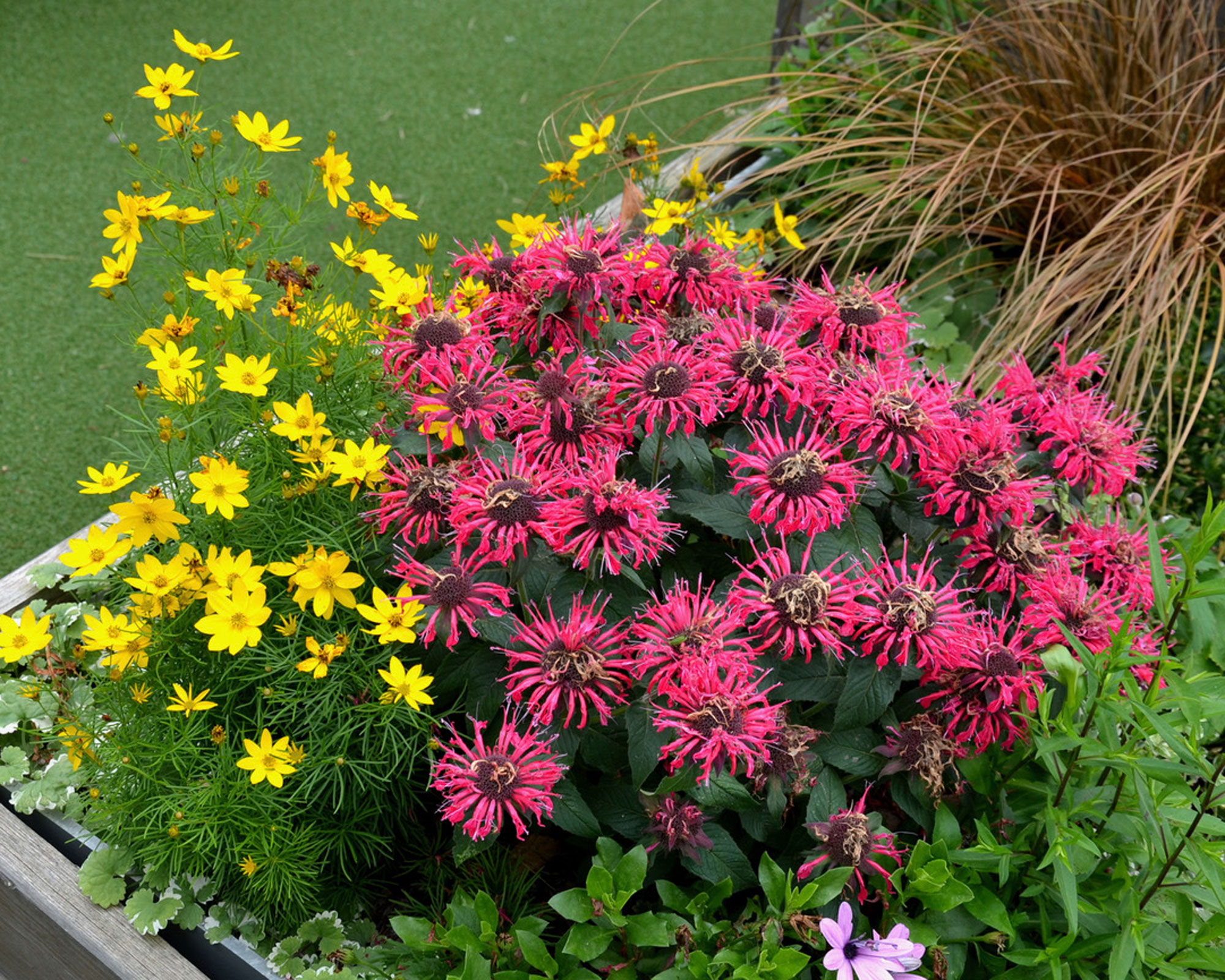
“Hummingbirds are captivated by bright, vibrant, and fragrant plants," explains Chuck Pavlich, director of new product development with Terra Nova Nurseries. "Red and red-orange flowers are particularly appealing to them, so consider planting Echinacea ‘Tomato Soup’ on your balcony to attract these charming birds.”
Learn what to plant in May for summer success.
2. Steer clear of pesticides
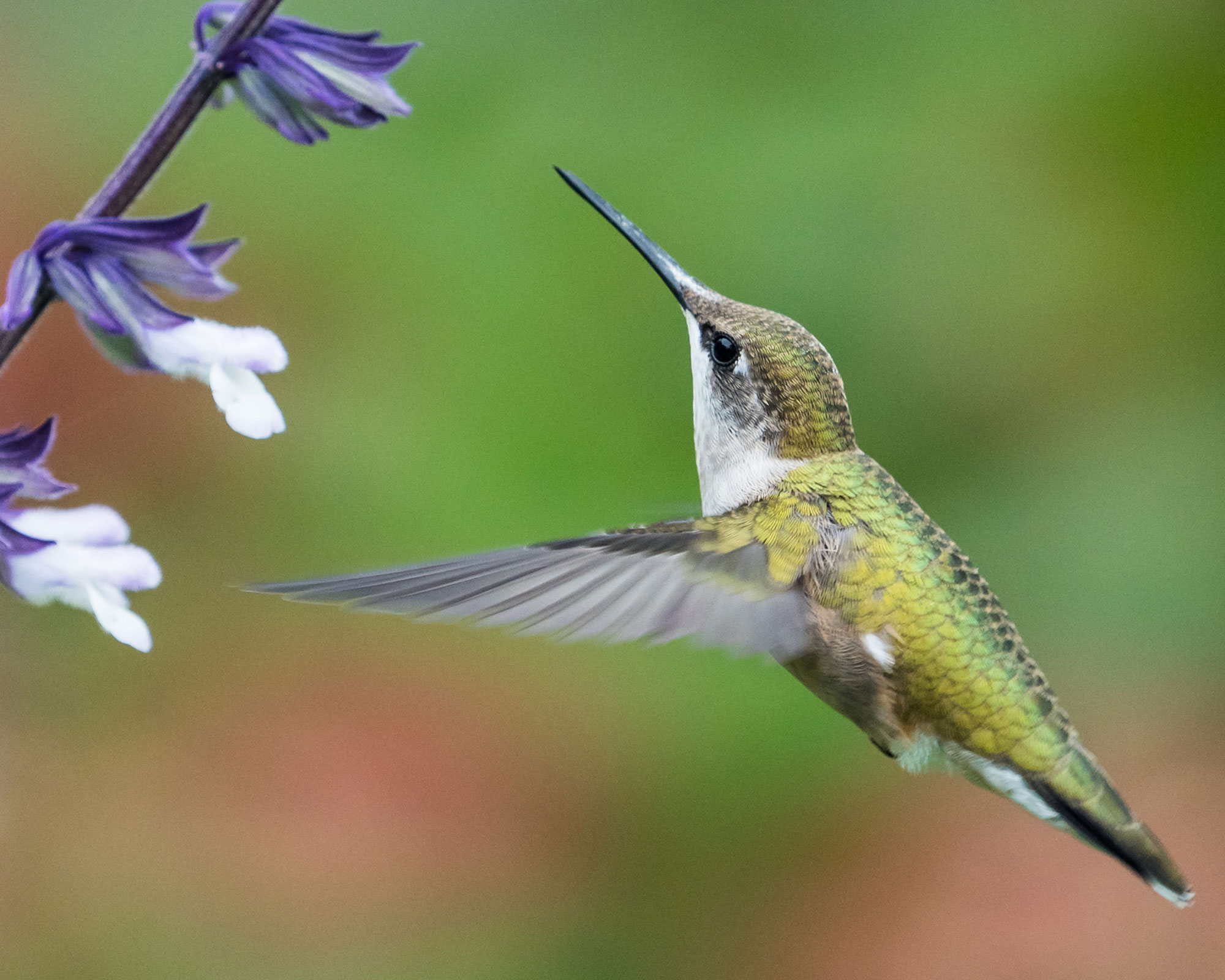
Hummingbirds feed on tiny insects as well as nectar. Bugs may be pests to us but are delicious and nutritious to hummingbirds. Once you’ve planted out your colorful urban garden, incorporate natural garden pest control methods.
Artificial pesticides will not only wipe out insect food sources on your balcony for hummingbirds but also intoxicate their nectar supply.
You can also use vinegar to make a natural pesticide mix that will get rid of ants, including the flying variety, and other insects (most hate the smell of vinegar). You can also use things that repel bugs to keep them away in the first place. The great new is you will have most of these in your kitchen cabinets already so no extra spend required.
3. Hang a hummingbird feeder
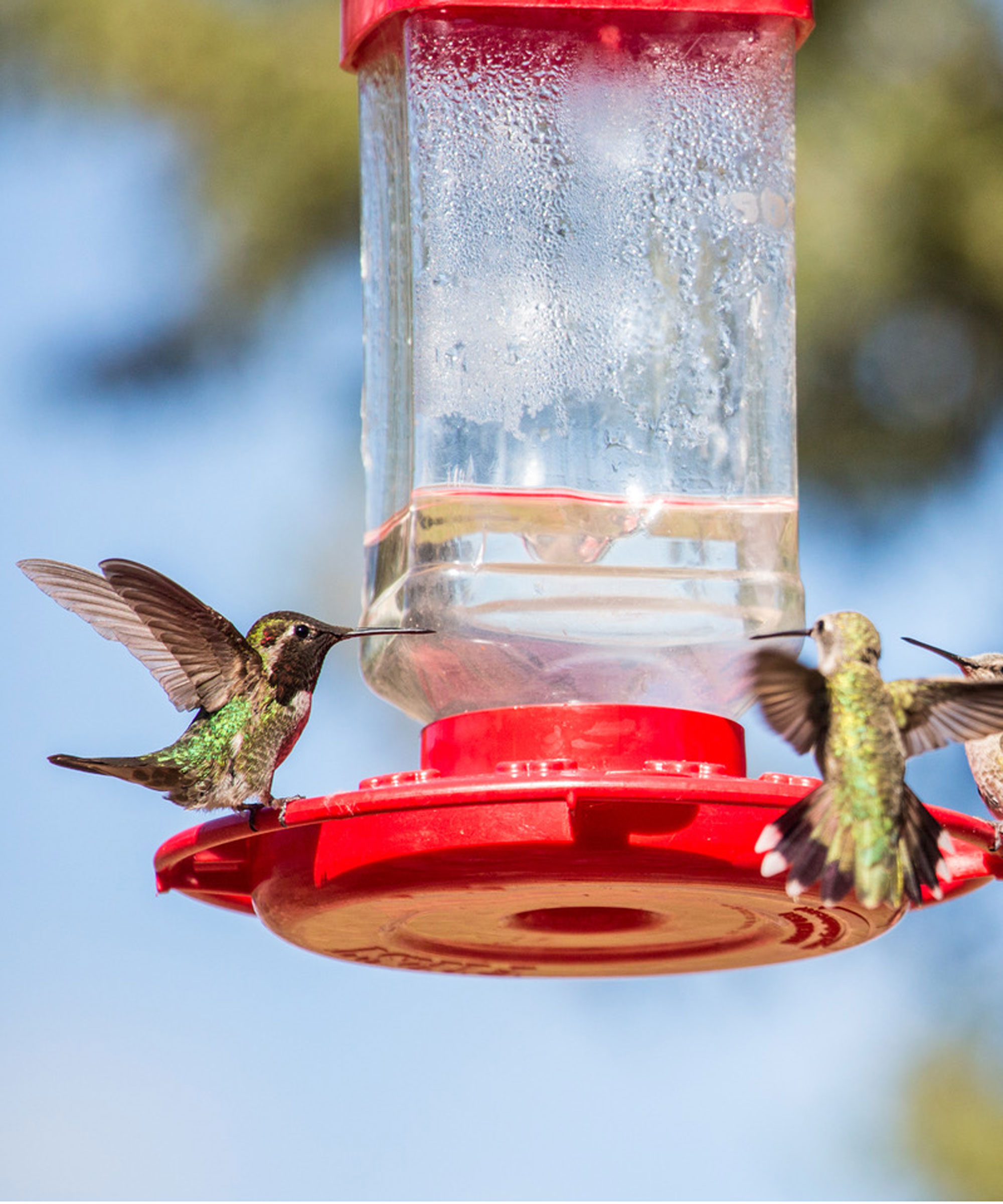
As well as native flowers, an easy way to entice hummingbirds onto your balcony is to put out specially designed hummingbird feeders.
Unlike other common garden birds, hummingbird diets consist of insects and nectar, so regular bird feeders will not be suitable for the creature's delicate needle-like beaks and hovering feeding style.
Look for bright-colored (preferably red) feeders made from glass or plastic that hold liquid. It should also have more than one feeding port and perches. This highly-rated hummingbird feeder available on Amazon is well-loved by customers with over 16k reviews.
Ensure the hummingbird feeder is hung up in a sheltered position away from predators such as cats. Balcony windows can also be hazardous for hummingbirds, so it is safer to place feeders away from glazing to prevent harmful window collisions.
If near your window is the only spot you can hang one from, try a window decal to prevent bird strikes. These pretty round prismatic vinyl clings from Amazon are perfect for the job and will throw pretty glimmers around your apartment. A win-win!
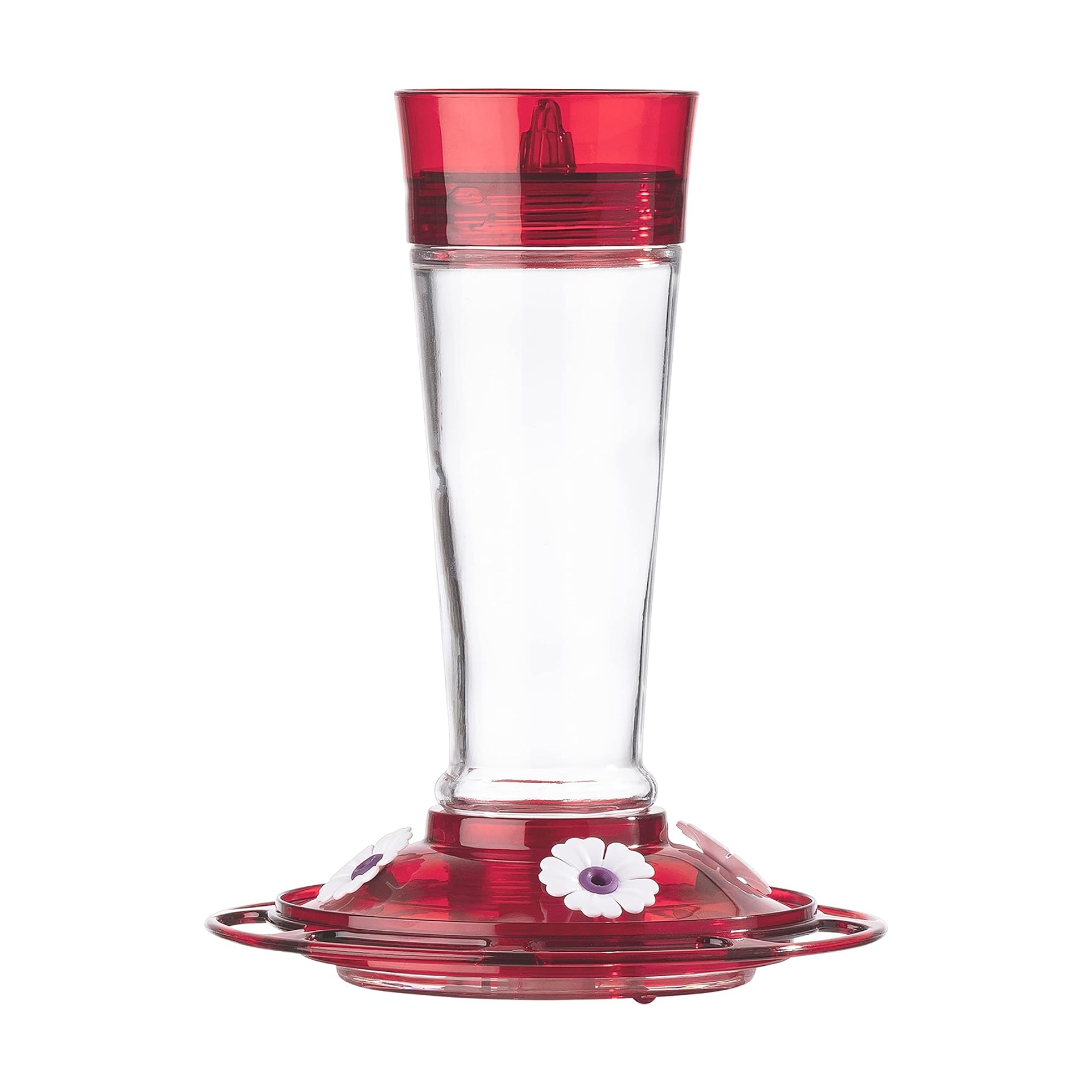
Price: $11.99
This simple hummingbird feeder holds 10 fluid ounces of hummingbird nectar and four flower-shaped feeding ports. Plus, the built-in ant moat prevents them from accessing the nectar. It's well-loved by customers with over 15k reviews.
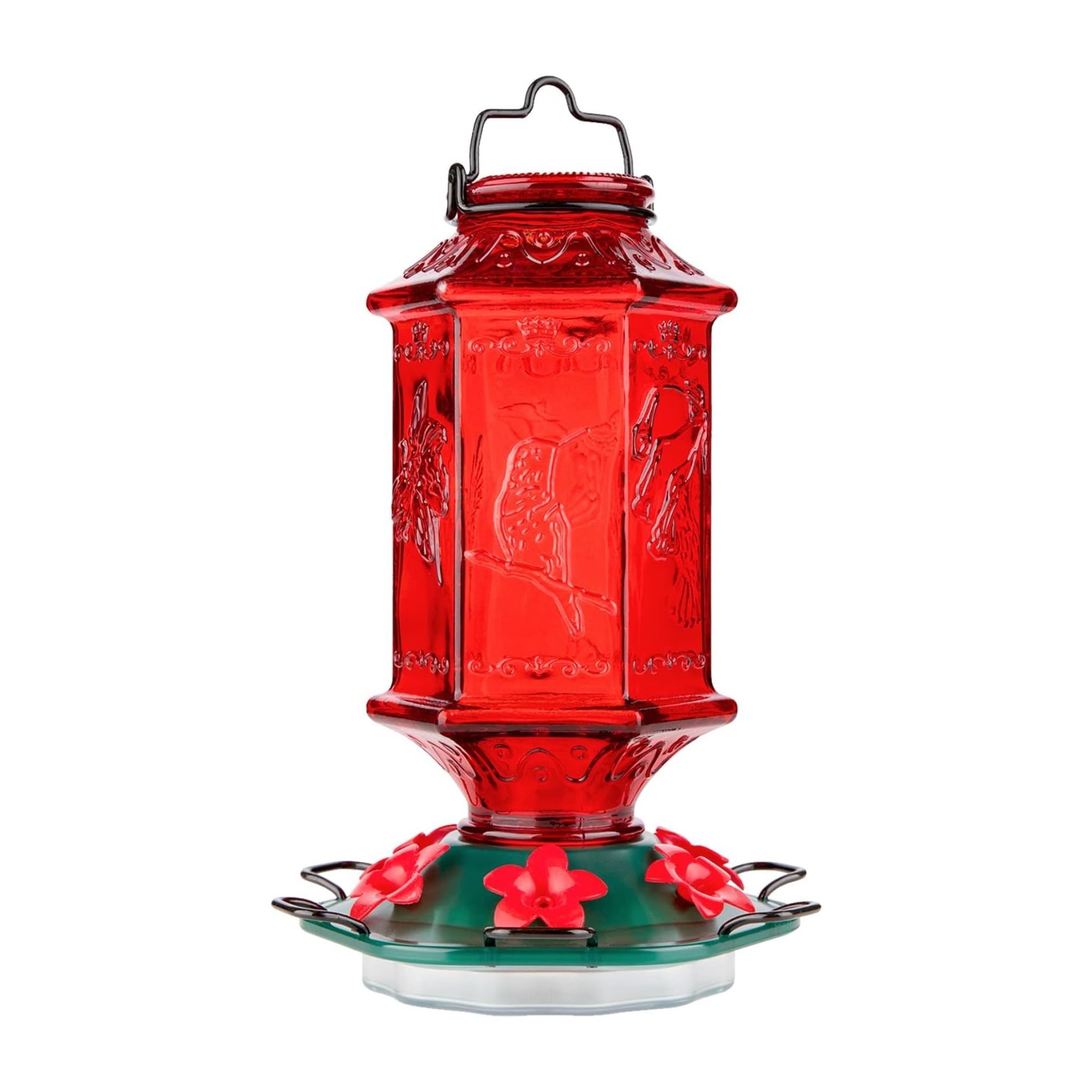
Price: $25.99
This glass, vintage-style hummingbird feeder really makes a statement in a small garden or on a balcony. It comes with six feeding ports and removable perches, so you can hang your feeder with or without them. You'll see in our guide that hummingbirds love a perch to rest on so it's great to have the option with this item.
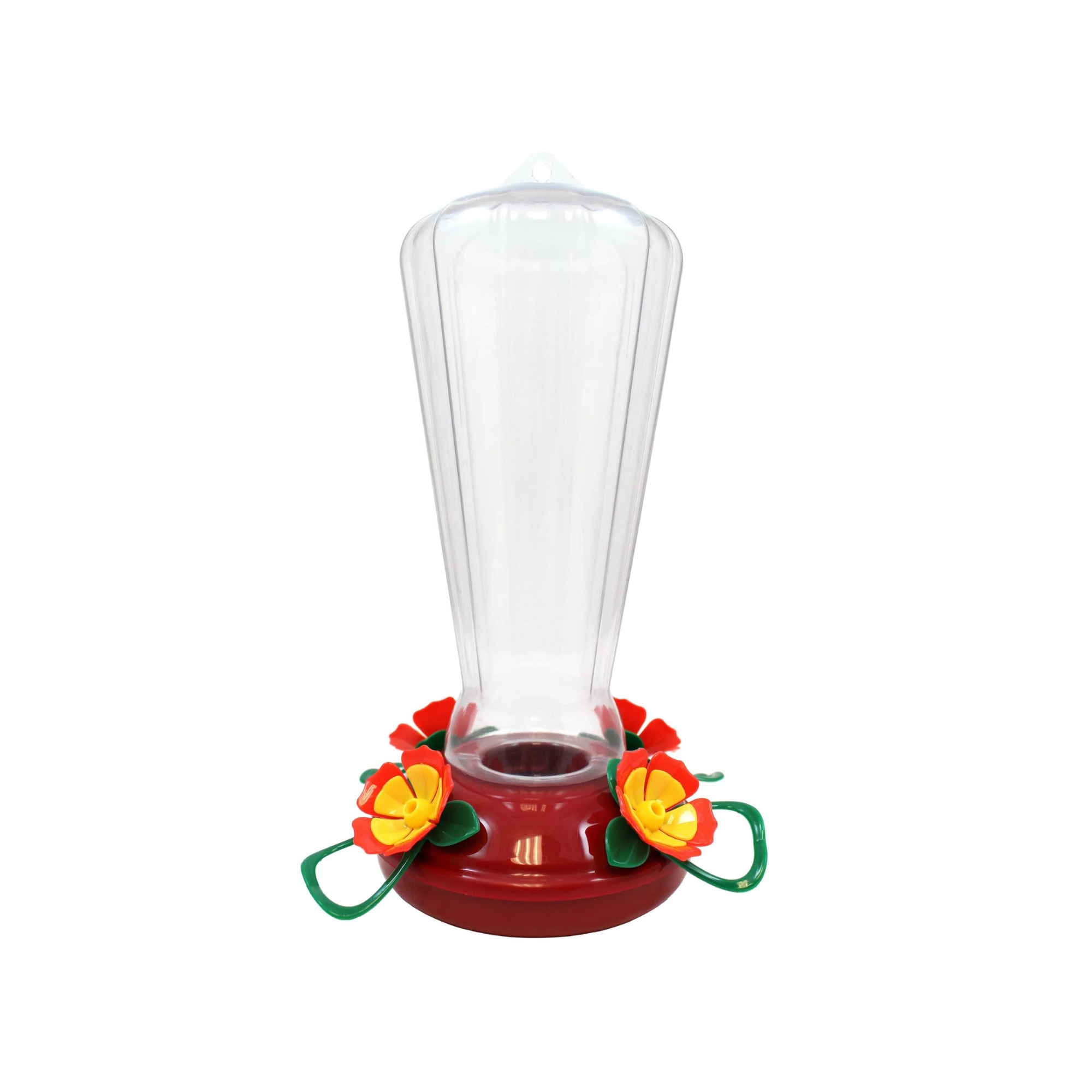
Price: $9.94
This budget-friendly buy features a leak-proof base and four built-in perches. It can hold 25 ounces of nectar and the plastic design is rust-proof. The flower feeding ports prevent bees and wasps from accessing the nectar.
4. Fill feeders with a homemade nectar recipe
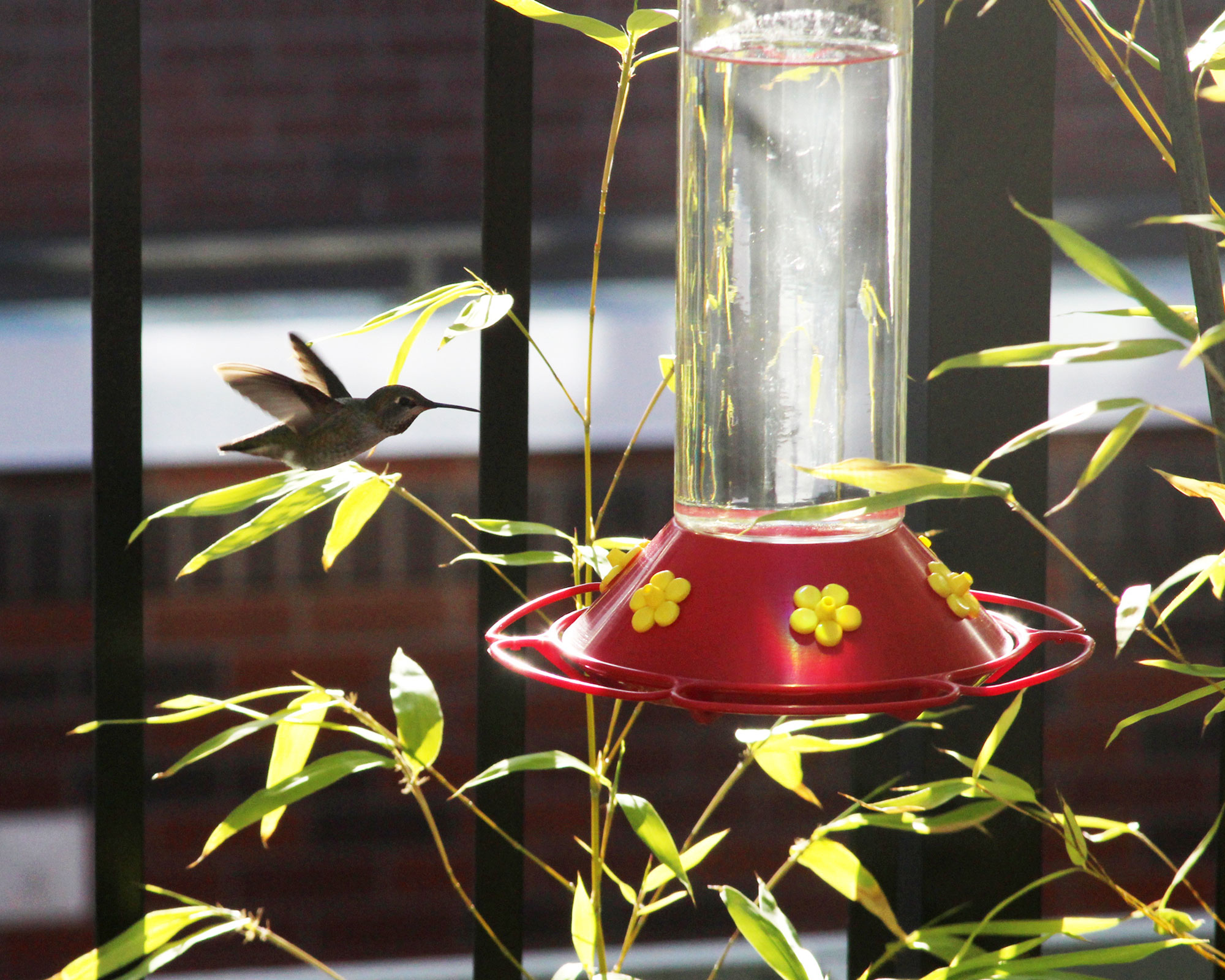
It's easy to create a homemade nectar recipe from household items that the birds enjoy almost as much as the real thing.
The only hummingbird DIY nectar recipe you’ll ever need is mix one part white granulated sugar to four parts cool boiled water.
Stick to granulated and refined white sugar. Don’t be tempted to use artificial sweeteners, brown sugar, honey, or organic sugar, and never add food coloring. These products are harmful to hummingbirds.
5. Clean your hummingbird feeder regularly
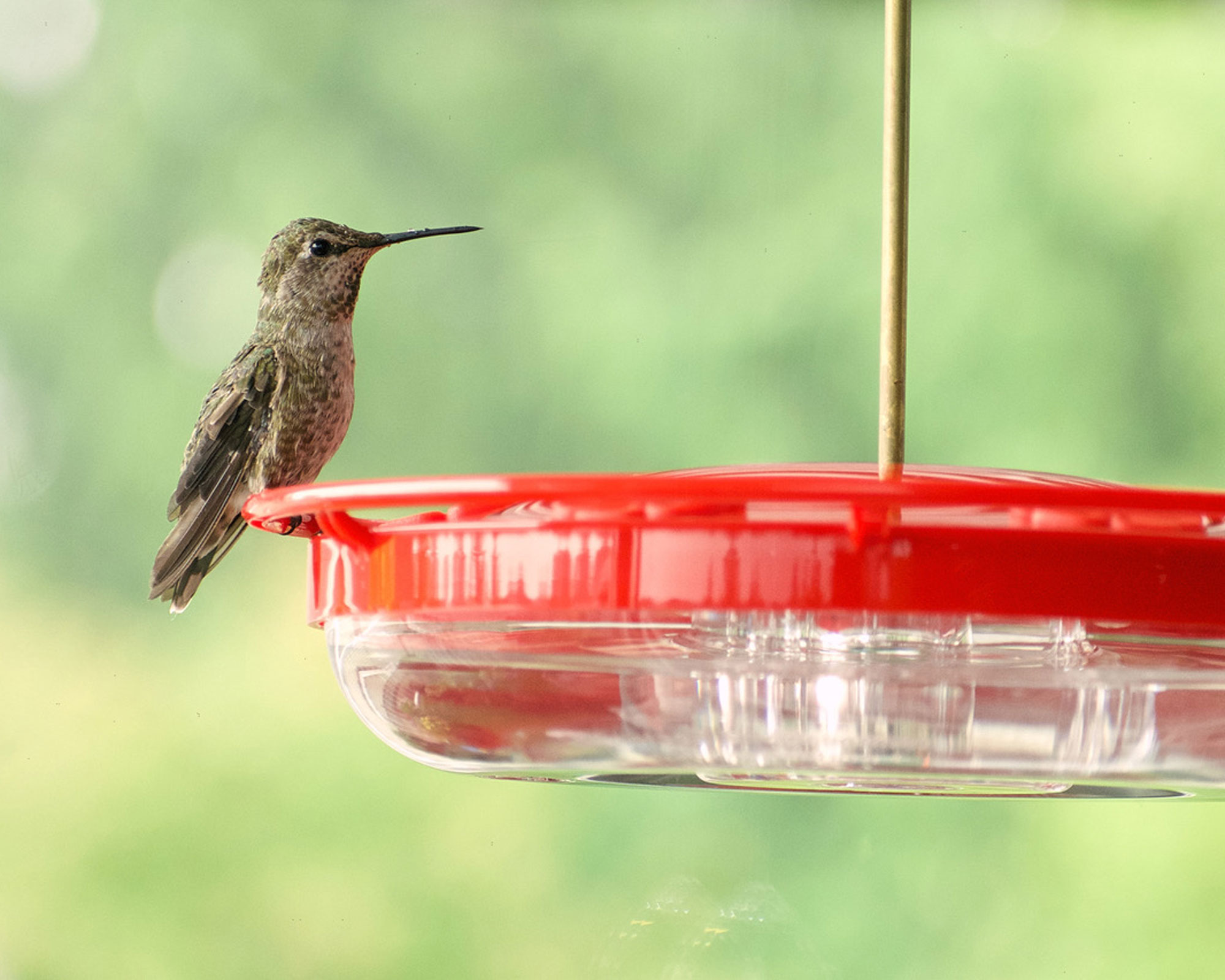
Cleaning your hummingbird feeder often is super important when it comes to attracting hummingbirds to your balcony.
It is vital to make sure the bird feeder you choose is easy to take apart to thoroughly clean. Delicate and dainty hummingbirds can easily become sick from dirty, contaminated feeders, so cleaning is a must.
Wildlife Biologist Kristina Lynn explains. “You want to be able to clean every single surface. If you don't, you can get black mold, salmonella, and all sorts of harmful diseases that can kill hummingbirds.”
Kristina recommends cleaning your hummingbird feeds two times a week in hot weather and once in cold, minimum.
“Soak the feeder in water and vinegar for an hour. Then scrub clean with a toothbrush and allow it to dry before refilling with sugar water,” Kristina continues.
6. Inject plenty of color
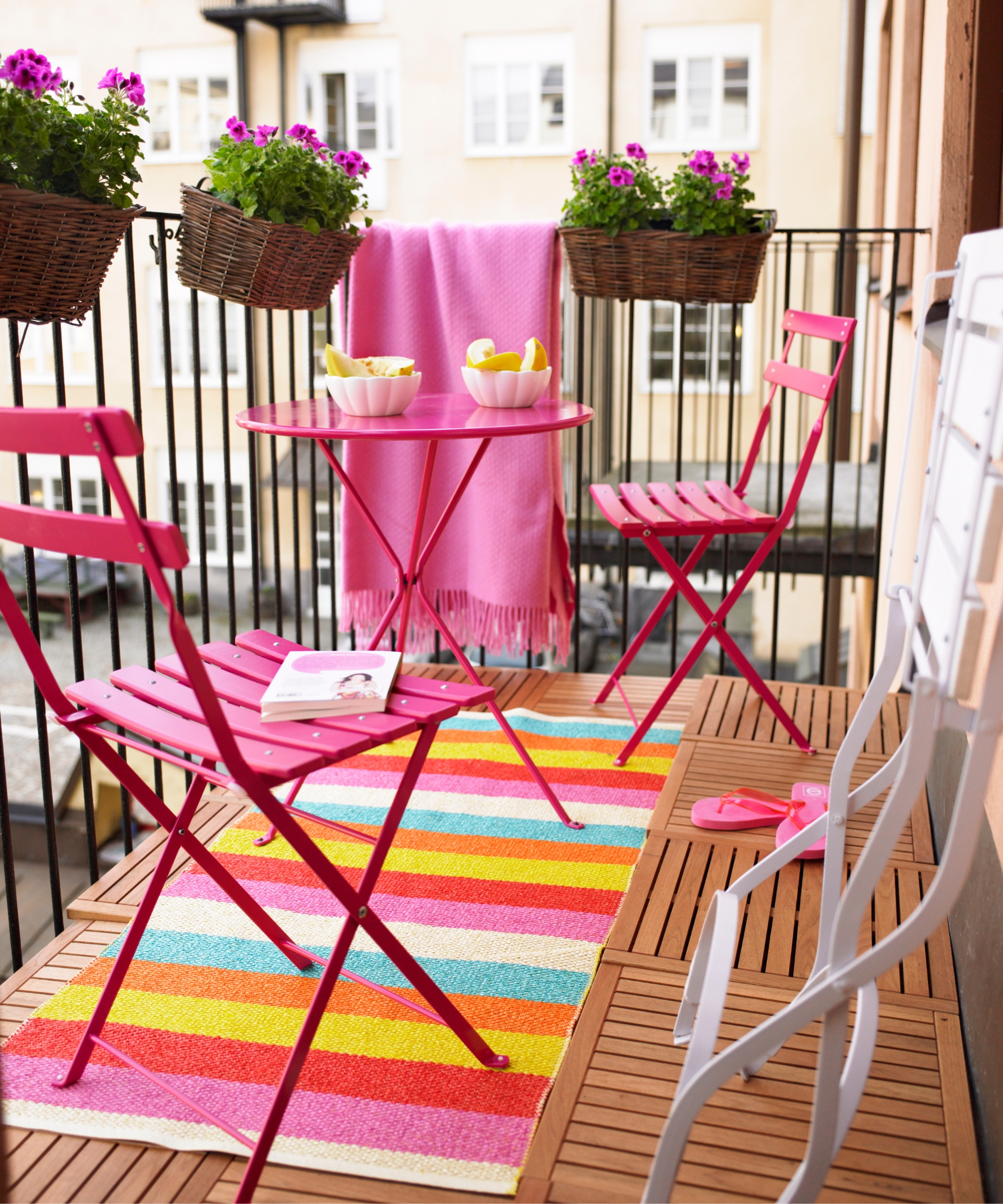
Bright colors, particularly red are a proven way to bring hummingbirds onto your apartment balcony. As well as bright flowers fill your balcony with colorful accessories to attract hummingbirds whilst they are darting past.
Hummingbird vision is sensitive to colors in the red to yellow range so by choosing plants in this tropical-toned spectrum, you’ll not only be keeping hummingbirds happy, you’ll also be nailing a hot outdoor garden trend.
Complement your planting scheme with colorful outdoor cushions, red hummingbird feeders, zesty-toned plant pots, and kaleidoscopic wall hangings.
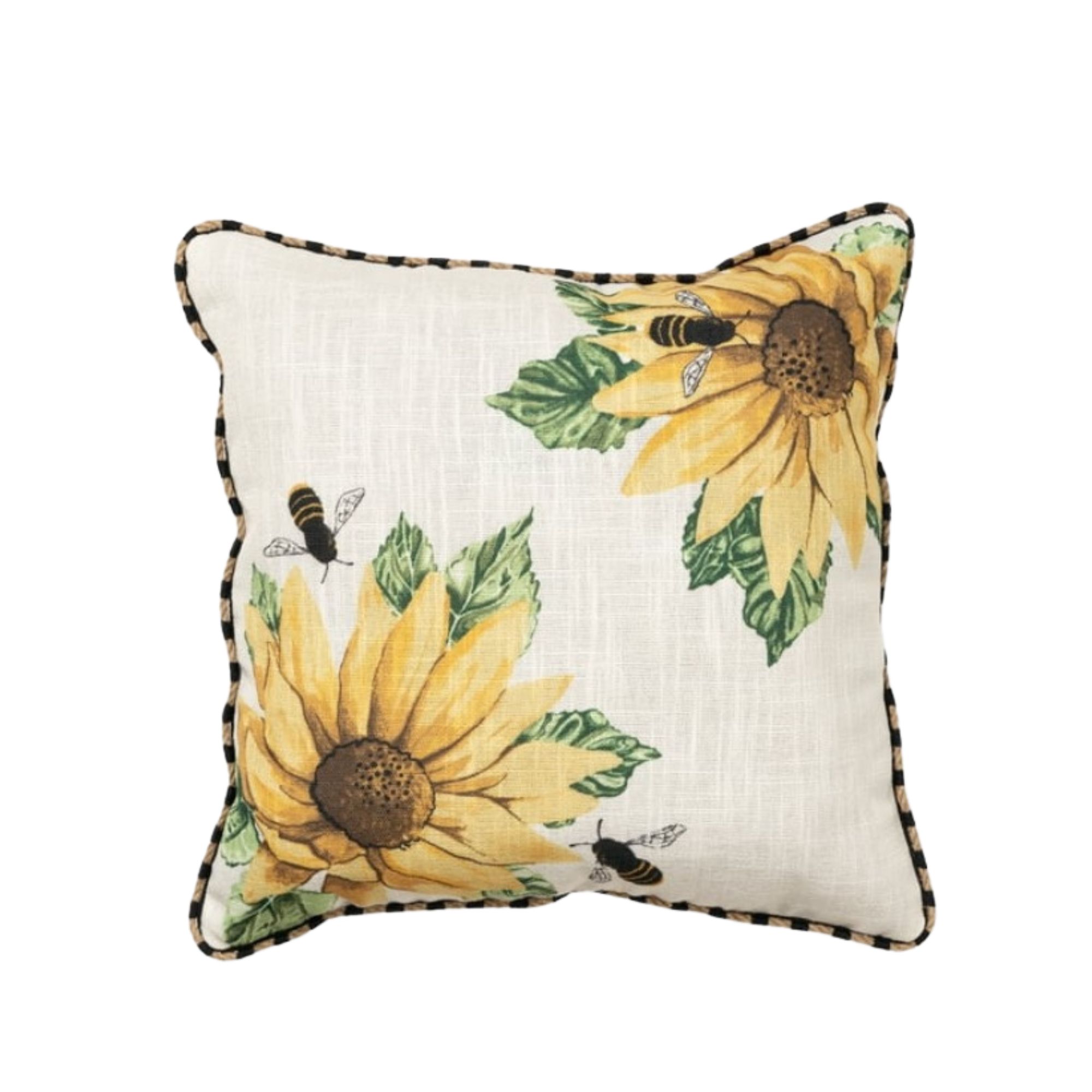
Size (in.): W19 x L19
Made from: Linen
Price: $14.47
Walmart shoppers love this adorable pillow, thanks to its comfortable padding, weather-resistant cover, and modern design. It comes in five other designs if you want to mix up your cushion styling but still have them remain cohesive. You can pick from a range of striped, block and logo companion pillows all at the same price point as this one. Delivery will bring it to you within two days in most US locations, whilst you can also click and collect at your nearest Walmart.
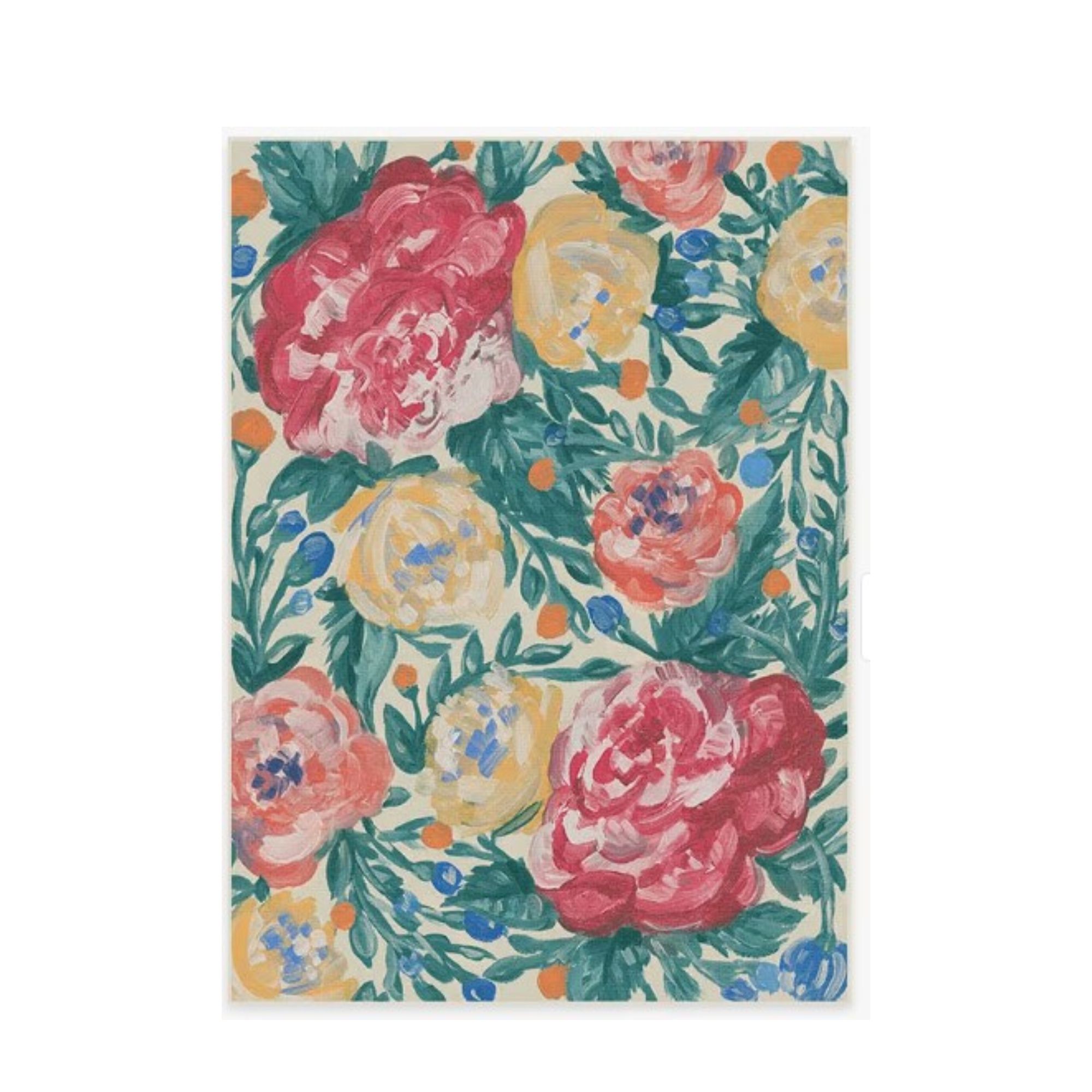
Size (ft.): W5 x L7
Made from: Polyester
Price: $229
We love the bold, artsy design of this rug, which is a stunning statement piece and perfectly includes lots of colors in the red-yellow spectrum. Ruggable's biggest selling point is it's two part rug system (soft padding underneath and a machine washable top) making this water-resistant number a perfect addition to any balcony space. Pair it with solar powered lanterns for a magical Midsummer Night's Dream inspired whimsical look. The retailer is currently offering 20% if you buy two rugs, and 15% of solo purchases. The smallest size available is 3x5 feet and priced at $129.
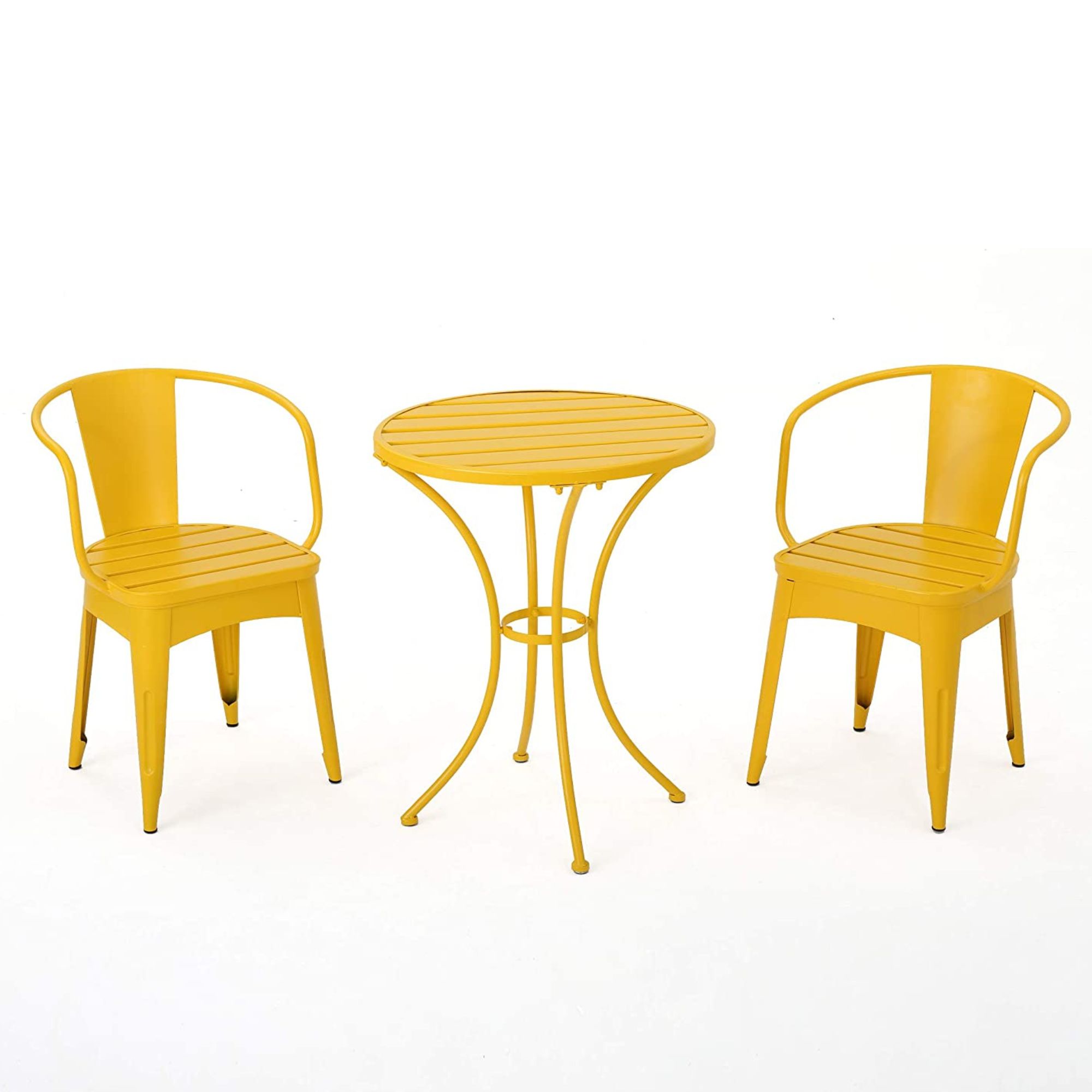
Made from: Cast Iron
Table size (in.): H29.24 x W24 x L24
Chair size (in.): H29.5 x W20.5 x D21.25
Price: $219.99
Made from cast iron, this bright and durable set is perfect for little balconies and little feathered friends will love the yellow, which hummingbirds can see well and are attracted too. The matte finish will also reduce glare for you. It's worth noting Amazon's labels say this item doesn't require assembly, whilst the seller's listing says it does. With our DIY knowledge, we reckon you'll need to at least put the legs on the table but either way, this will not be a complex build.
7. Pop in perch spots
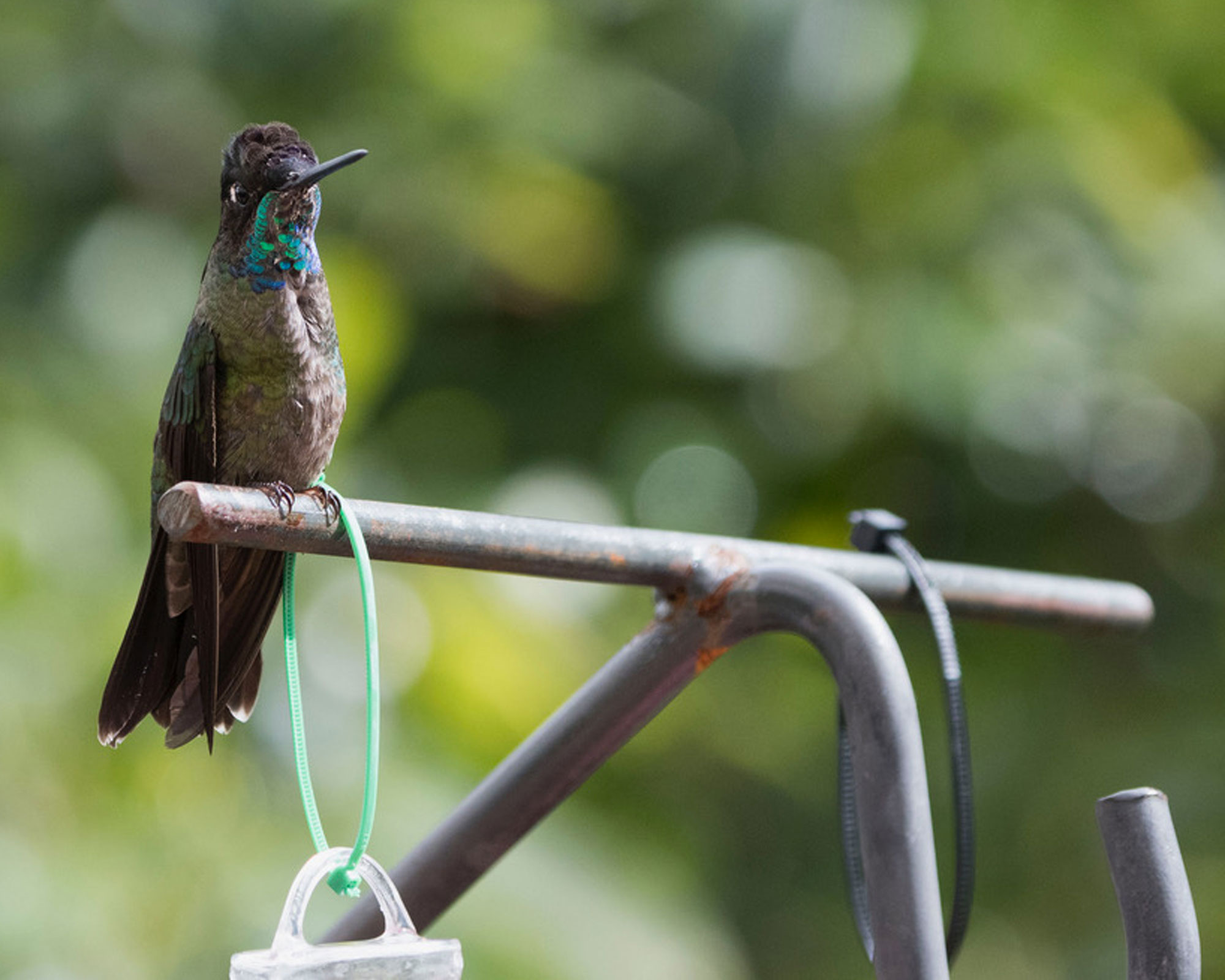
Hummingbirds love to find safe spots to rest so add plenty of perch habitats to your balcony.
Hanging basket brackets, secured vegetable stakes, and planter supports, colorful garden statues and ornaments, such as these butterfly garden stakes available on Amazon, which come in a pack of four and can be pushed easily into a plant pot, will add a touch of playful charm and a space for hummingbird respite.
8. Have patience and be consistent
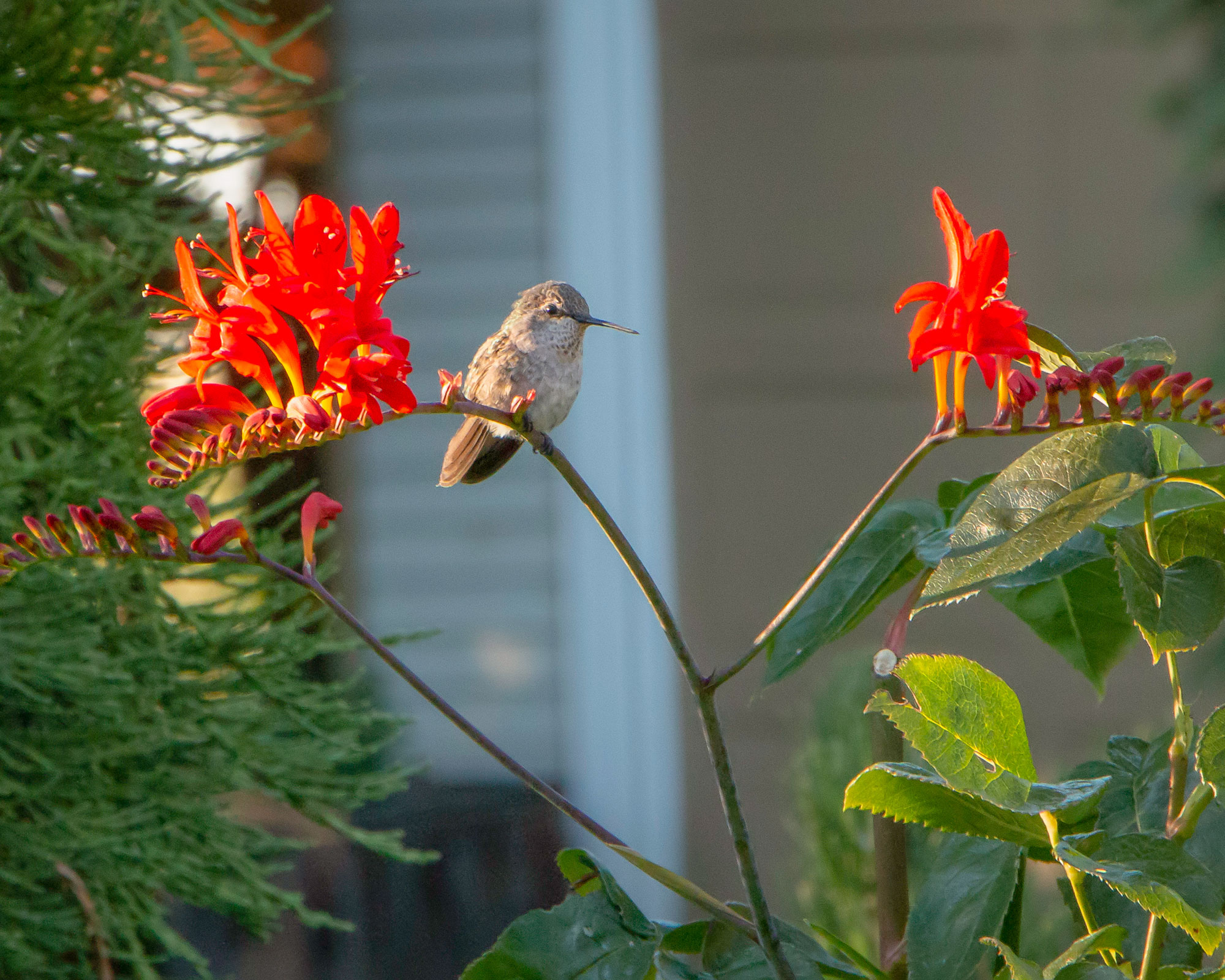
Once you’ve planted out colorful flowers and placed a feeder in a safe spot, don’t expect to see a hummingbird instantly. The key is to be patient.
“Think about seasonal considerations in your area. Look online to see when hummingbirds come to your area and put your feeders out a week before," says Kristina.
"On my apartment balcony, I had to wait two weeks before hummingbirds came to my feeder, they just hadn’t seen it yet.”
Most hummingbirds migrate to different areas where food is more accessible during winter months. According to the American Bird Conservancy, most North American hummingbirds breed in Canada down to the Gulf Coast and then migrate to Mexico and Central America.
Look online at eBird to find out when hummingbirds are due back in your area in springtime and put up your feeder a week before.
Will I see hummingbirds on my balcony during winter?
Almost all of North America is blessed by the hummingbird population during spring and summer. But come winter the little sun worshipers head south in search of tropical blooms and insects. The American Bird Conservancy states that the exception is Anna's Hummingbird, which stays put all year along the Pacific Coast.
However, The BCSPCA states that some species of hummingbird are beginning to alter their migration patterns to stick around during winter. Scientists believe this may be due to us humans offering a food supply throughout cold months.
Why not test the theory? In the fall keep feeders up for two weeks after you see the last bird using it. If they keep coming, ensure a clean nectar supply is on offer during fall right through to spring. Pioneering over-winter hummingbirds need food supply during cold months all the more.
Meet our experts
By introducing hummingbird-favorite flowers, clean hummingbird feeders filled with fresh sugar-water and plenty of perch spots, it won't be long before you can sit back on your favorite balcony furniture to watch the delicate display of darting hummingbirds from your very own box seats!







